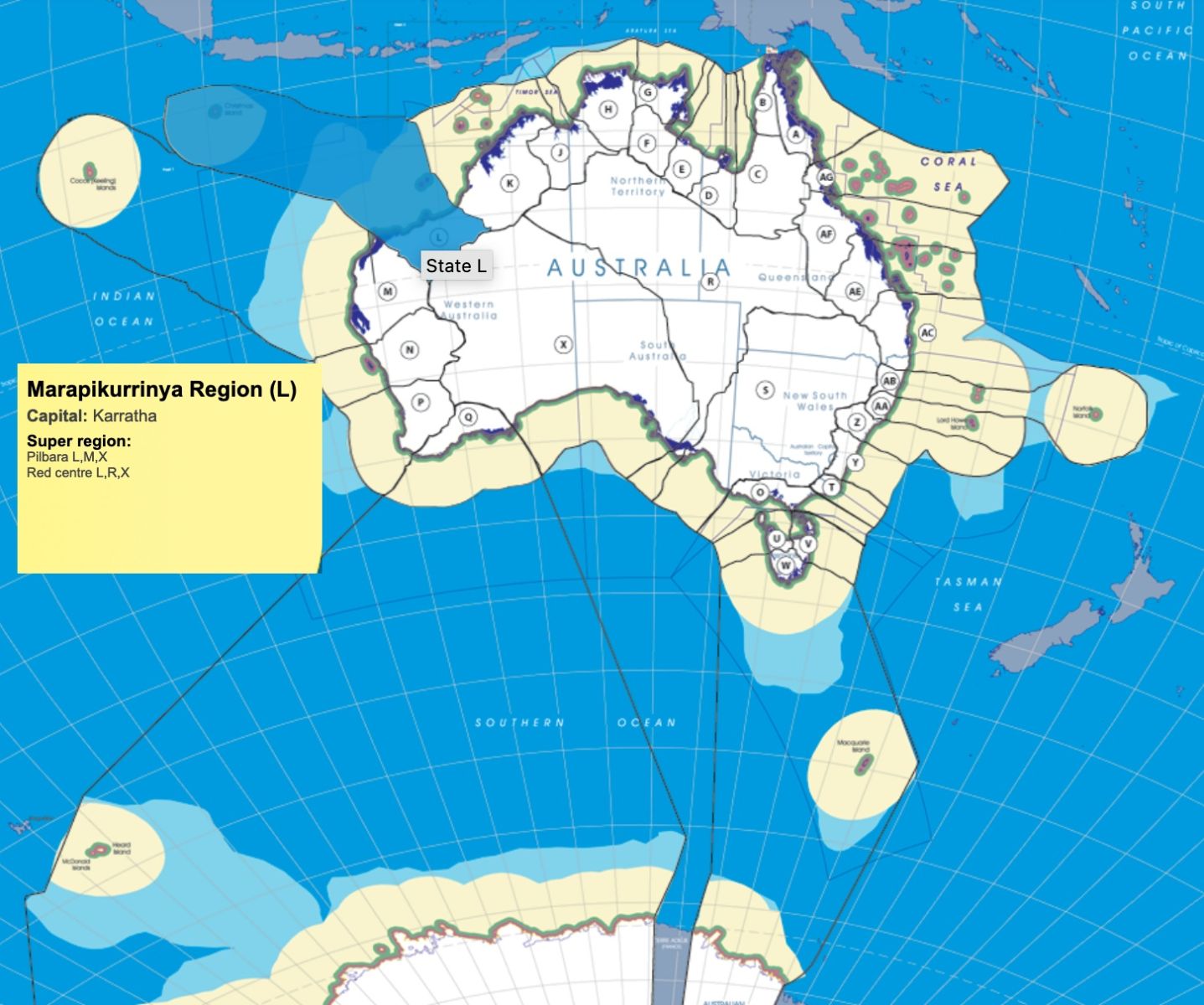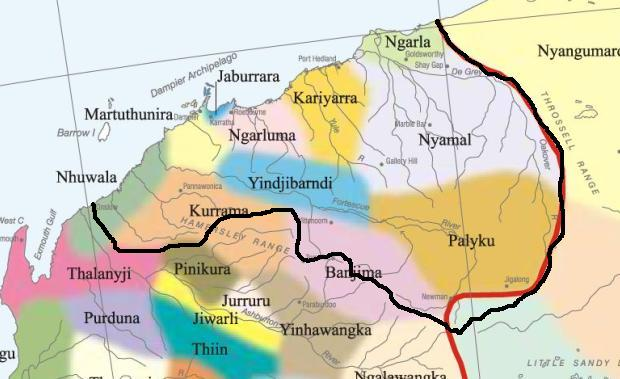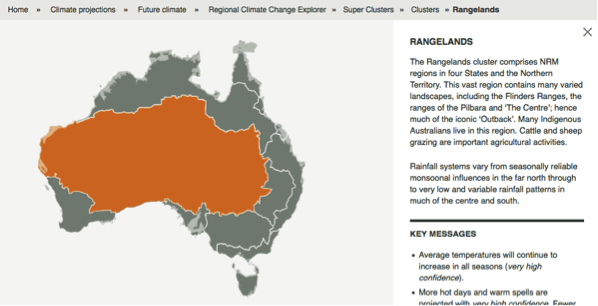Submitted by jenny999 on Mon, 02/10/2023 - 10:57am
Title: "Nurturing Marapikurrinya: A FOWTOR-Based Approach to Regional Progress"
I. Introduction
- Introduce the Marapikurrinya region, located in Western Australia, and its unique characteristics within the Pilbara and Red Centre super regions.
- Highlight the importance of this region in terms of environmental, cultural, and economic diversity.

II. Flow-of-Water Top-of-Ridge (FOWTOR) Framework
- Provide an overview of the FOWTOR model and its relevance to regional planning.
- Emphasize that the Marapikurrinya region's boundaries are defined by the flow water.
- Water flows include De Gray River, Shaw River, and Yule River.
III. Membership in Two Super Regions
- Explain the region's dual membership in the Pilbara and Red Centre super regions, signifying its role in broader regional cooperation.
- Highlight the potential for collaboration, resource sharing, and collective problem-solving within these super regions.
IV. Governance and Representation
- Describe Karratha as the regional capital responsible for coordinating administrative functions and regional activities.
- Emphasize the role of "The Voice" as the representative body, ensuring that the region's interests are effectively communicated at the federal level.
- Regional Capital: Each FOWTOR region should have a designated regional capital, which serves as the administrative center for that particular region. This capital city or town is responsible for coordinating regional activities, liaising with state and local governments, and representing the region's interests at the federal level. It acts as the hub for regional decision-making and administrative functions.
-
Indigenous Representative Body (The Voice): To ensure that the FOWTOR region's interests are effectively communicated and advocated at the federal level, a representative body known as "The Voice" can be established. This body comprises elected representatives from the region, who are responsible for articulating the region's needs, concerns, and priorities to the federal government in Canberra.
-
The Voice serves as a direct link between the nations in the FOWTOR region and the federal government, advocating for policies, resources, and investments that align with the region's 13 objectives. These objectives encompass various aspects, including natural resource management, infrastructure development, social services, and Indigenous rights.
- By establishing a regional capital and The Voice, the FOWTOR model ensures that each region has a structured approach to engage with federal, state, and local governments. This political framework empowers regions to have a voice in the governance process, advocate for their unique needs, and work collaboratively with various levels of government to achieve their objectives.
V. 13 Key Objectives
- Present the 13 key objectives specific to the Marapikurrinya region, covering areas such as natural resource management, infrastructure development, social services, and Indigenous rights.
- Stress the importance of aligning policies and resource allocation with these objectives for regional advancement.
-
The Flow-of-Water Top-of-Ridge (FOWTOR) model is a comprehensive framework for regionalism in Australia that considers various aspects of geography, environment, and development. This model is based on the natural flow of water along ridges and encompasses the following key elements:
-
(1) Natural Resource Management: FOWTOR-based regionalism informs strategies for managing Australia's diverse natural resources within distinct watershed regions. These regions are essential for safeguarding unique ecosystems and wildlife habitats.
-
(2) Water Resource Allocation: By delineating watersheds along ridges, FOWTOR analysis aids in the equitable allocation of water resources across the country. This ensures sustainable use and minimizes conflicts in agriculture, industry, and urban areas.
-
(3) Climate Adaptation Planning: Different FOWTOR regions exhibit varying climate patterns and vulnerability to climate change impacts. Regionalism guides climate adaptation plans, tailoring strategies to address specific challenges in each region.
-
(4) Agricultural Zoning: FOWTOR-based regionalism assists in zoning for agriculture, aligning land use with natural water availability and soil quality. This approach promotes efficient and sustainable agricultural practices.
-
(5) Biodiversity Conservation: Prioritizing biodiversity conservation is a core component of the FOWTOR model. It identifies regions with unique ecosystems or high levels of endemism as targets for conservation efforts.
-
(6) Land Use Planning: When planning urban and rural development, FOWTOR regionalism helps identify suitable areas for settlement while considering factors like water availability, flood risks, and environmental sensitivity.
-
(7) Disaster Risk Reduction: Understanding water flow along ridges is essential for mitigating flood risks and planning disaster-resistant infrastructure in flood-prone areas.
-
(8) Indigenous Land Management: Incorporating FOWTOR-based regionalism into land management practices respects the Indigenous knowledge of local environments, fostering a holistic approach to land stewardship.
-
(9) Tourism Planning: FOWTOR analysis is invaluable for tourism planning, as it highlights unique natural attractions and recreational opportunities within each region, promoting sustainable tourism development.
-
(10) Social Infrastructure: FOWTOR regionalism extends to the categorization of settlements, including hamlets, villages, towns, and cities. This classification ensures that social infrastructure and services are appropriately scaled to meet the needs of local communities.
-
(11) Indigenous Infrastructure: Recognizing the original nations and their territories within FOWTOR regions is fundamental to acknowledging and preserving Indigenous heritage and cultural connections.
-
(12) Connection Superstructure: The model considers the development of road networks, railways, ferry routes, and air transportation systems to facilitate connectivity and accessibility within and between FOWTOR regions.
-
(13) River Water Flows into the Sea: Understanding the path of river water as it flows into the sea is crucial for managing water resources and preserving aquatic ecosystems at the maritime border of each FOWTOR region within the Australian Economic Zone.
-
By incorporating these additional elements, the FOWTOR model provides a comprehensive framework for regional planning and development in Australia, encompassing natural, social, Indigenous, and infrastructural aspects while respecting the country's unique geographic features and environmental diversity.
VI. Indigenous Engagement
- Acknowledge the rich Indigenous heritage within the Marapikurrinya region.
- Describe initiatives aimed at empowering Indigenous communities, preserving cultural traditions, and involving Indigenous voices in regional development.
-
Key Responsibilities of The Voice:
-
(1) Advocacy: The Voice articulates the FOWTOR region's needs and priorities to federal policymakers and agencies, advocating for policies that support regional development and sustainability.
-
(2) Resource Allocation: It plays a crucial role in securing federal funding and resources for regional projects and initiatives, ensuring equitable distribution based on the region's unique requirements.
-
(3) Policy Development: The Voice actively participates in the development of federal policies and legislation that impact the region, offering insights and recommendations that reflect the region's interests.
-
(4) Coordination: It facilitates coordination between federal, state, and local governments to ensure seamless implementation of policies and projects within the region.
-
(5) Community Engagement: The Voice engages with the local community to gather input, gather feedback, and involve residents in decision-making processes that affect the region.
-
(6) Monitoring and Evaluation: It monitors the progress of projects and initiatives within the region, assessing their impact on the 13 objectives, and making adjustments as needed.

NOTE1: Likely indicators only; for original Aboriginal Australia Map © 1991 & restrictions on its copy & use, see Aboriginal Australia Map
NOTE2: The red line is part of the original Aboriginal Australia Map © 1991. The black line is added by Bloggerme for discussion only. It shows the likely State boundary based on the flow of water only. As "the ridge" (See FOWTOR) naturally impacts on the development of the language, social or nation groups of the Indigenous people of Australia, the proposed border is often identical to the group boundary shown on the Aboriginal Australia Map. This is as was expected. Variations are social/historical & result in a particular language, social or nation group being represented in two adjoining States.
VII. Water Management (NRM)
- Discuss the allocation of resources for water management within the region, addressing conservation, agriculture, and urban use.
- Emphasize the significance of responsible water practices for sustaining the region's ecosystem and livelihoods.

VIII. Disaster Resilience
- Explain how the FOWTOR model helps identify and address flood risks and disaster vulnerabilities within the Murapikurrinya region. Explain how the region addresses disaster risks, including droughts, bushfires, wind, floods, and water quality issues. These include anticipated continuous sea level rise, temperature rise, and increased extreme events including changing weather patterns, some of which it is impossible to forecast because of those changing weather patterns and most of which has causes outside the control of action for risk mitigation.
- Highlight the region's commitment to building resilience and ensuring the safety of its communities.
IX. Climate Adaptation and Global Warming Zones
- Discuss the Marapikurrinya region's exposure to climate change impacts and its engagement in global warming zones, including Antarctica.
- Present strategies for climate adaptation and environmental protection.
X. Trade and Economic Development
- Provide insights into the region's trade relationships, economic diversification, and key trading partners.
- Showcase the role of trade in driving economic growth and sustainability.
XI. Policy Recommendations
- Summarize key policy recommendations based on the FOWTOR framework and the region's 13 objectives.
- Emphasize the need for policies that prioritize regional well-being, inclusivity, and development.
XII. Conclusion
- Reinforce the value of a FOWTOR-based approach for the Marapikurrinya region's progress and prosperity.
- Express the region's readiness to collaborate with governing bodies and Indigenous representatives to achieve common goals.
XIII. Acknowledgment
- Attribute the preparation of this outline to AI technology as an example of modern tools assisting in regional development.
XIV. Questions and Discussion
- Open the floor for questions, comments, and discussions with relevant political bodies and Indigenous representatives to ensure a comprehensive understanding of the region's aspirations and needs.

Add new comment